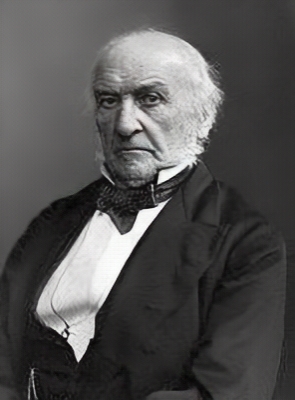Marriage is a big thing, of course, but today we are brought up with the idea that it is only one big thing out of many. If you make a mistake, people know they can always get a divorce. Statistics show that even in the church, divorce, unfortunately, is a well-used option. If you can try to imagine the lives of women in the early 19th century, for them marriage wasn’t “a” big thing–it was THE biggest thing that could happen, setting the course for their lives and futures in ways we only have an inkling of, today.
During the regency, fashionable couples often got married at St. George’s Church in Mayfair. Located right at the edge of Hanover Square and only steps from Bond Street, St. George’s was an icon of the fashionable West End. In my book, The House in Grosvenor Square, Ariana Forsythe’s wedding to the Paragon, the handsome but temperamental Mr. Mornay, is planned for St. George’s.

St. George’s Hanover Square, Parish Church
In 1816 (a banner year) there were 1,063 weddings, including nine on Christmas Day! Yet the aristocracy often chose to forego St. George’s in favor of the chapel on their own estates; or sometimes they married in their home in a small, private affair with just a few witnesses. Even Lord Byron was married in such a way.
A few infamous weddings are detailed on this page of St. George’s website, where, by the way, you can find contact info. to schedule your own wedding if you happen to live in London and wish to be married! (You’d also have to be Anglican, I suppose.)
Celebrating
There seems to have been little protocol regarding how to celebrate a wedding during the regency, at least in the fashionable world. People might hold a breakfast, lunch or supper for their friends and family, or they might not. Church weddings were “open to the public” but unless the individuals getting married were celebrities (though never called such in that day) most people wouldn’t dream of bothering to attend the ceremony. Likewise, wedding invitations were hardly thought of. Getting married was most often a simpler, more private affair than it is today, and reading that Miss so-and-so had married Lord X in the Morning Post was deemed sufficient.
The poorer classes, on the other hand, were likely to celebrate with parties before, during, and after the nuptials took place. In Scotland, the “penny wedding” could include the whole town, and at least two days of revelry.
A White Gown?
The white dress for women was not in vogue specifically for weddings, likely because white gowns had long been popular evening-wear for any formal occasion. According to English Women’s Clothing in the Nineteenth Century, “The symbolic significance of white is well known and of great antiquity; we may note, however, that while a girl’s first ball gown was generally white, the bridal dress was by no means invariably so.”
For the year 1816 it states,”Note: Wedding dresses appear indistinguishable from evening dresses.”
Women of means would wear the fanciest fabric they could afford for their weddings, and not only in white. The custom of putting away the gown after the ceremony didn’t exist, and so wedding gowns were chosen with future use in mind. For regency men, by 1820 a proper “wedding suit” would be “a blue dress coat with gilt buttons, white waistcoat, and black or dark gray breeches.”* Again, it was a costume one could use over and over.
(Strange that today we put so much emphasis on a special gown and suit for the wedding, when the marriages themselves are so often treated as less sanctified?)
To Veil or Not to Veil?
There was no custom of veiling the face for a wedding, although veils were popular. A short lace veil might be part of a bonnet for walking dress, for example. Likewise, trains were used for evening dress, assuredly not the domain of weddings. Perhaps the most telling feature of historical costume concerning weddings during this period is that while you can find multitudinous examples of morning, walking, evening, full, promenade, half-dress, riding, carriage and even opera, etc., one never comes across a category for wedding dress. It simply did not exist. (In English Women’s Clothing it is found as a category by 1851.)
This ought to be good news for authors of regency romance, like me: instead we yearn to find the “right” way to portray a bride, when in fact there was no truly “right” way.
To show how many of the ball gowns of the day look suspiciously like wedding dresses to our modern eyes, take a look at some of the illustrations below, for example.
NONE OF THE FOLLOWING ARE WEDDING GOWNS

left– Comptesse–1810





Above, and right, 1816



The first bridal dress portrayed in English Women’s Clothing is dated 1848 and is of white satin, very ornamental, and with a veil that falls down the back, not over the face.
Are you interested in more details on wedding costume during the regency? On actual weddings that took place, or exactly how the marriage banns were worded? If you think you might purchase my upcoming ebook, The Making of A Match: A Regency Wedding Compendium, please take this short survey and let me know! It will help me gauge interest, and know exactly what to include in the ebook. Thank you!
Linore
http://www.LinoreBurkard.com Linore (at) LinoreBurkard (dot) com
Originally posted 2012-06-04 13:48:48.



 If Samuel Taylor Coleridge had lived in our times, we would have said he was mentally ill. Actually, likely, if he had lived in our times he would have been diagnosed at a young age and found a successful medication schedule and no one but his intimates would have known he was ill at all.
If Samuel Taylor Coleridge had lived in our times, we would have said he was mentally ill. Actually, likely, if he had lived in our times he would have been diagnosed at a young age and found a successful medication schedule and no one but his intimates would have known he was ill at all.
 William Gladstone, a liberal politician and Prime Minister was an angel of mercy for some of these young women. He would walk the streets of London at night and encourage the prostitutes he found to come home with him where he and his wife would provide them a meal and shelter with the offer of help to change their lives. He assisted the sisters at the House of Mercy at Clewer near Windsor. The women were housed there until respectable employment could be arranged for them.
William Gladstone, a liberal politician and Prime Minister was an angel of mercy for some of these young women. He would walk the streets of London at night and encourage the prostitutes he found to come home with him where he and his wife would provide them a meal and shelter with the offer of help to change their lives. He assisted the sisters at the House of Mercy at Clewer near Windsor. The women were housed there until respectable employment could be arranged for them.

















